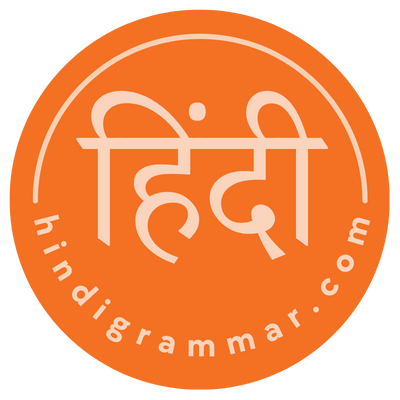 Introduction
Introduction
Hindi Bornomala, also known as the Hindi Alphabets or Devanagari Script, is the writing system used to represent the Hindi language. With its roots dating back to ancient India, Hindi Bornomala is a beautiful and intricate script that plays a significant role in preserving the rich cultural heritage of India. In this comprehensive guide, we will delve into the basics of Hindi Bornomala, its historical significance, the arrangement of letters, pronunciation, and various tips and tricks to help you master this fascinating script.
- Historical Significance of Hindi Bornomala
Hindi Bornomala has a deep historical significance that dates back to the 4th century CE. It evolved from the ancient Brahmi script and has undergone several changes over the centuries. It wasn’t until the 10th century CE that the script we recognize today as Devanagari started taking shape.
The term “Devanagari” is derived from two Sanskrit words: “Deva” meaning “deity” and “Nagari” meaning “city.” It is often referred to as the script of the gods due to its extensive use in sacred texts like the Vedas, Upanishads, and other religious scriptures. Today, Devanagari is the official script of not only Hindi but also languages such as Sanskrit, Marathi, Nepali, and Konkani.
- The Arrangement of Letters in Hindi Bornomala
Hindi Bornomala is a phonetic script, which means each character represents a specific sound. The letters are arranged systematically, making it relatively easy to learn. The script is organized into two main categories: Vowels (Svar) and Consonants (Vyanjan).
A. Vowels (Svar):
In Hindi Bornomala, there are 13 main vowels, known as Svar. These are classified into two groups based on their pronunciation: short and long vowels. Short vowels are pronounced briefly, while long vowels are held for a slightly longer duration.
- Short Vowels: अ (a), इ (i), उ (u), ए (e), ओ (o)
- Long Vowels: आ (aa), ई (ii), ऊ (uu), ऐ (ai), औ (au)
Additionally, Hindi Bornomala includes two independent vowels known as ऋ (ri) and ॠ (rri). However, these are less commonly used in modern Hindi.
B. Consonants (Vyanjan):
Hindi Bornomala consists of 33 consonants, known as Vyanjan. Each consonant has an inherent ‘a’ sound, and the pronunciation is modified when combined with vowels or matras (diacritical marks). The basic consonants are:
क (ka), ख (kha), ग (ga), घ (gha), ङ (nga) च (cha), छ (chha), ज (ja), झ (jha), ञ (nya) ट (ṭa), ठ (ṭha), ड (ḍa), ढ (ḍha), ण (ṇa) त (ta), थ (tha), द (da), ध (dha), न (na) प (pa), फ (pha), ब (ba), भ (bha), म (ma) य (ya), र (ra), ल (la), व (va) श (sha), ष (ṣa), स (sa), ह (ha)
- Pronunciation and Writing in Hindi Bornomala
Pronunciation in Hindi Bornomala is quite straightforward due to its phonetic nature. Each character represents a specific sound, which remains consistent regardless of the word it appears in. The script is written from left to right, and the vowels are typically placed above the consonants.
For example, let’s take the word “भारत” (Bharat), which means India. The first letter, भ (bha), is a consonant, and the second letter, आ (aa), is a vowel. When combined, they create the sound “Bhaa.” Continue this process for all the letters in the word to get the complete pronunciation.
- Matras: Modifying the Sounds of Vowels
Matras are diacritical marks used in Hindi Bornomala to modify the sounds of vowels when combined with consonants. They are placed above, below, or beside the consonant to indicate the change in pronunciation. There are four main types of matras:
A. Kana Matra (युक्ताक्षर): Matras that appear on top of consonants, e.g., कि (ki), तु (tu).
B. Anuswar (अनुस्वार): A dot that appears above a consonant, indicating a nasal sound, e.g., मंगल (mangal).
C. Chandrabindu (चंद्रबिंदु): A dot that appears above a consonant, indicating a nasal sound with a slight ‘ch’ sound, e.g., मृदुला (mṛdulā).
D. Visarg (विसर्ग): Looks like a colon (:) and appears after a vowel, indicating a light exhale after the vowel sound, e.g., राजा: (rājā:).
- Tips and Tricks to Master Hindi Bornomala
A. Practice Writing: The key to mastering any script is consistent practice. Start by writing the letters and gradually progress to words and sentences.
B. Listen and Repeat: Listen to native speakers and imitate their pronunciation. This will help you develop a natural flow and accent.
C. Flashcards: Create flashcards with the letters, their pronunciation, and examples of words using those letters.
D. Online Resources: Utilize online language learning platforms, apps, and tutorials to reinforce your understanding of Hindi Bornomala.
E. Patience and Perseverance: Learning a new script takes time and effort. Be patient with yourself and keep practicing regularly.
Conclusion
Hindi Bornomala is a beautiful and essential aspect of Hindi language and culture. Learning this script opens up a gateway to the vast treasure of literature, poetry, and scriptures of India. By understanding the historical significance, arrangement of letters, pronunciation, and mastering matras, you can confidently read, write, and appreciate the beauty of Hindi Bornomala. Embrace the journey of learning this exquisite script, and you’ll find yourself immersed in the rich linguistic heritage of India.
